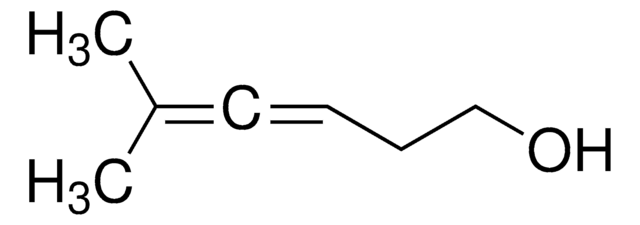774103
Copper
nanopowder, 60-80 nm particle size (SAXS), ≥99.5% trace metals basis
Sinónimos:
Copper nanoparticles
Iniciar sesiónpara Ver la Fijación de precios por contrato y de la organización
About This Item
Fórmula empírica (notación de Hill):
Cu
Número de CAS:
Peso molecular:
63.55
EC Number:
MDL number:
UNSPSC Code:
12352302
PubChem Substance ID:
NACRES:
NA.23
Productos recomendados
Quality Level
assay
≥99.5% trace metals basis
form
nanopowder
resistivity
1.673 μΩ-cm, 20°C
particle size
60-80 nm (SAXS)
bp
2567 °C (lit.)
mp
1083.4 °C (lit.)
density
8.94 g/mL at 25 °C (lit.)
application(s)
battery manufacturing
SMILES string
[Cu]
InChI
1S/Cu
InChI key
RYGMFSIKBFXOCR-UHFFFAOYSA-N
Application
Copper nanopowders have seen use in biomedical applications as an antimicrobial ; as plasmonic materials and as a component of reforming catalysts.
Preparation Note
Partially Passivated: < 5% oxygen added by weight
signalword
Danger
hcodes
Hazard Classifications
Aquatic Acute 1 - Aquatic Chronic 1 - Flam. Sol. 2 - Self-heat. 1
Storage Class
4.2 - Pyrophoric and self-heating hazardous materials
wgk_germany
WGK 2
flash_point_f
Not applicable
flash_point_c
Not applicable
Elija entre una de las versiones más recientes:
¿Ya tiene este producto?
Encuentre la documentación para los productos que ha comprado recientemente en la Biblioteca de documentos.
Los clientes también vieron
Chan; G.H.; et al.
Nano Letters, 7, 1947-1952 (2007)
Vizcaino; A.J.; et al.
International Journal of Hydrogen Energy, 32, 1450-1461 (2007)
Jayesh P Ruparelia et al.
Acta biomaterialia, 4(3), 707-716 (2008-02-06)
The antimicrobial properties of silver and copper nanoparticles were investigated using Escherichia coli (four strains), Bacillus subtilis and Staphylococcus aureus (three strains). The average sizes of the silver and copper nanoparticles were 3 nm and 9 nm, respectively, as determined
Seiko Ishida et al.
Proceedings of the National Academy of Sciences of the United States of America, 110(48), 19507-19512 (2013-11-13)
Copper is an essential trace element, the imbalances of which are associated with various pathological conditions, including cancer, albeit via largely undefined molecular and cellular mechanisms. Here we provide evidence that levels of bioavailable copper modulate tumor growth. Chronic exposure
R Squitti et al.
Neurology, 67(1), 76-82 (2006-07-13)
To assess whether serum copper in Alzheimer disease (AD) correlates with cognitive scores, beta-amyloid, and other CSF markers of neurodegeneration. The authors studied copper, ceruloplasmin, total peroxide, and antioxidants levels (TRAP) in serum; beta-amyloid in plasma; and copper, beta-amyloid, h-tau
Nuestro equipo de científicos tiene experiencia en todas las áreas de investigación: Ciencias de la vida, Ciencia de los materiales, Síntesis química, Cromatografía, Analítica y muchas otras.
Póngase en contacto con el Servicio técnico







